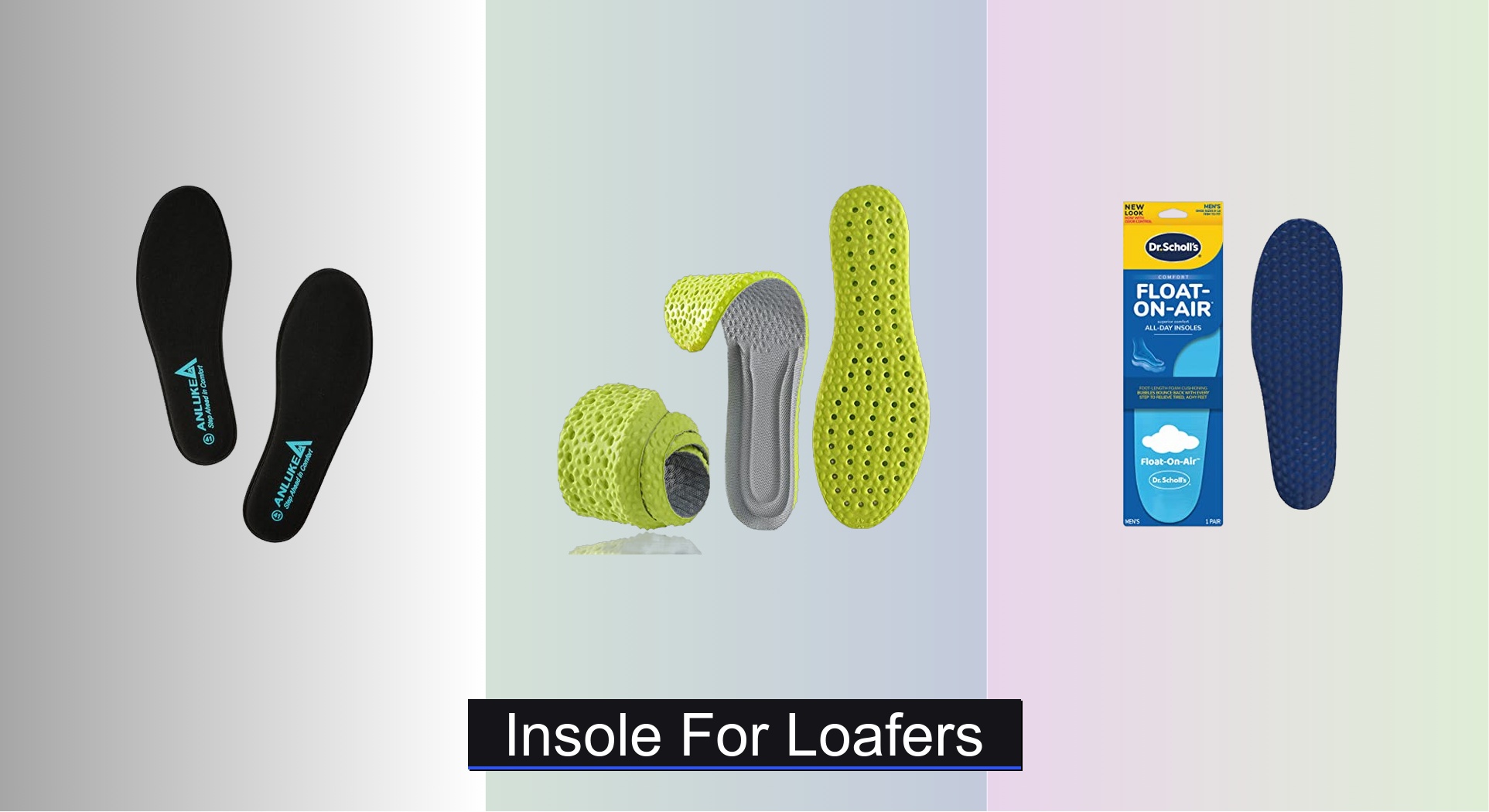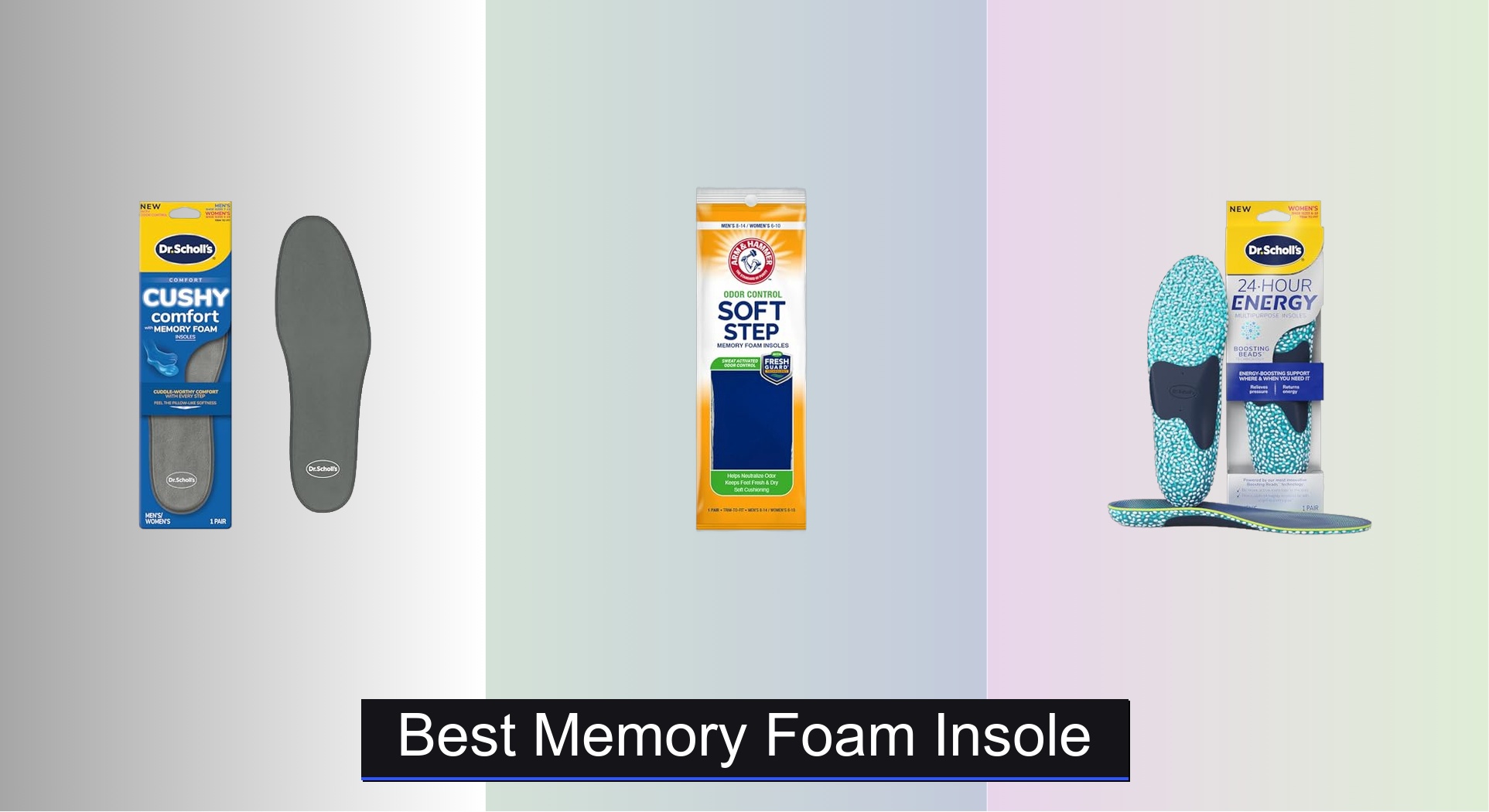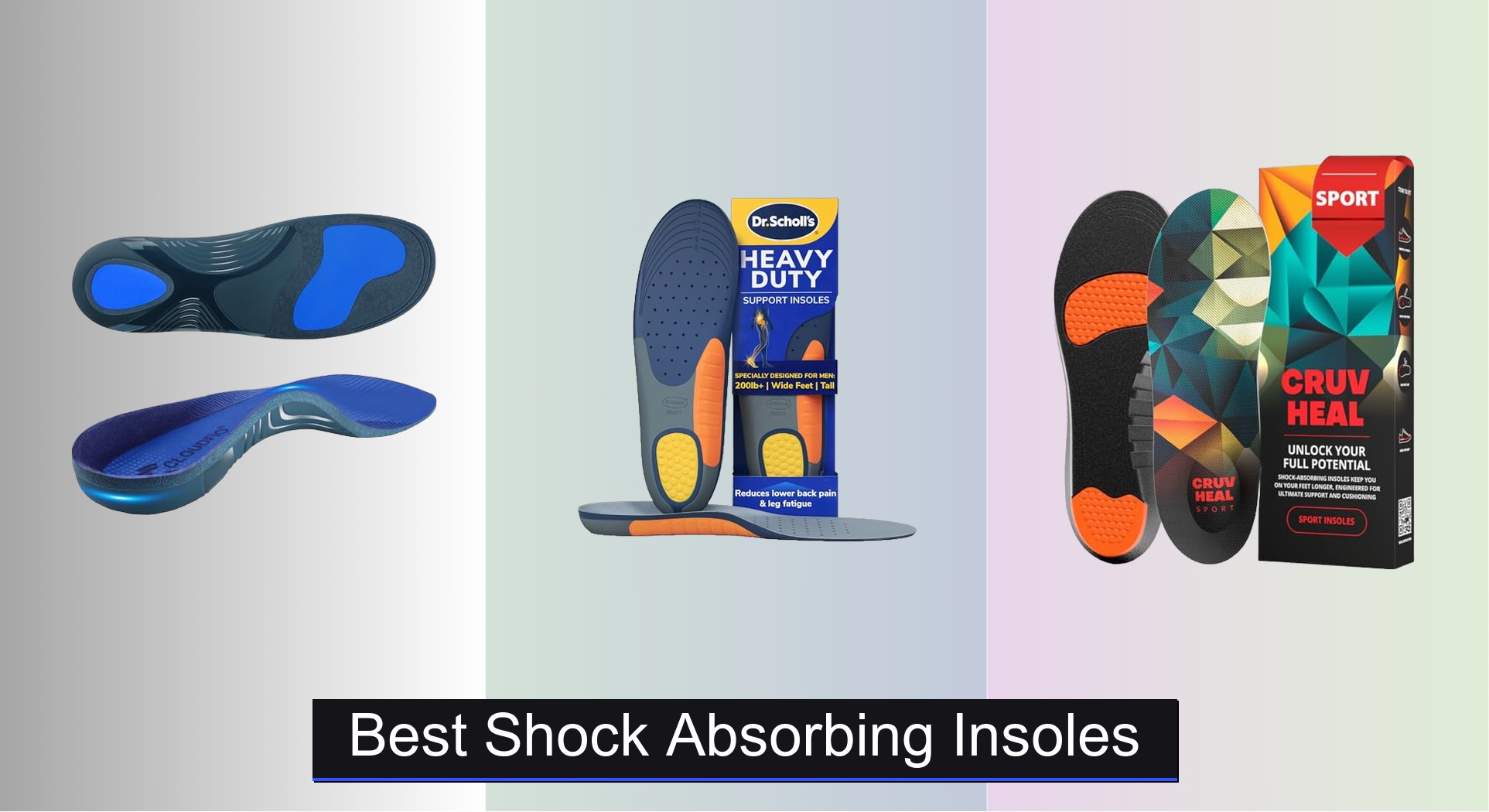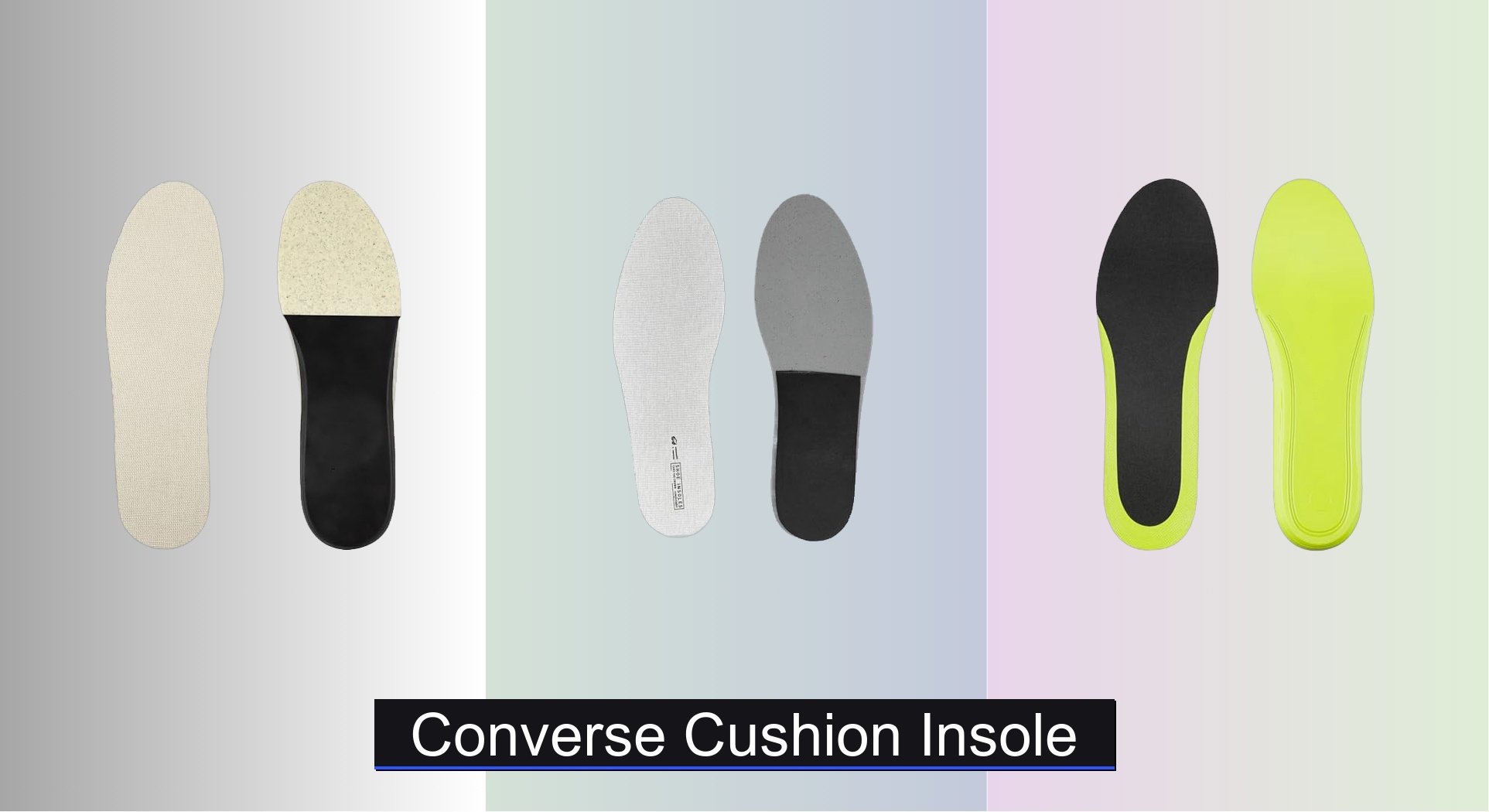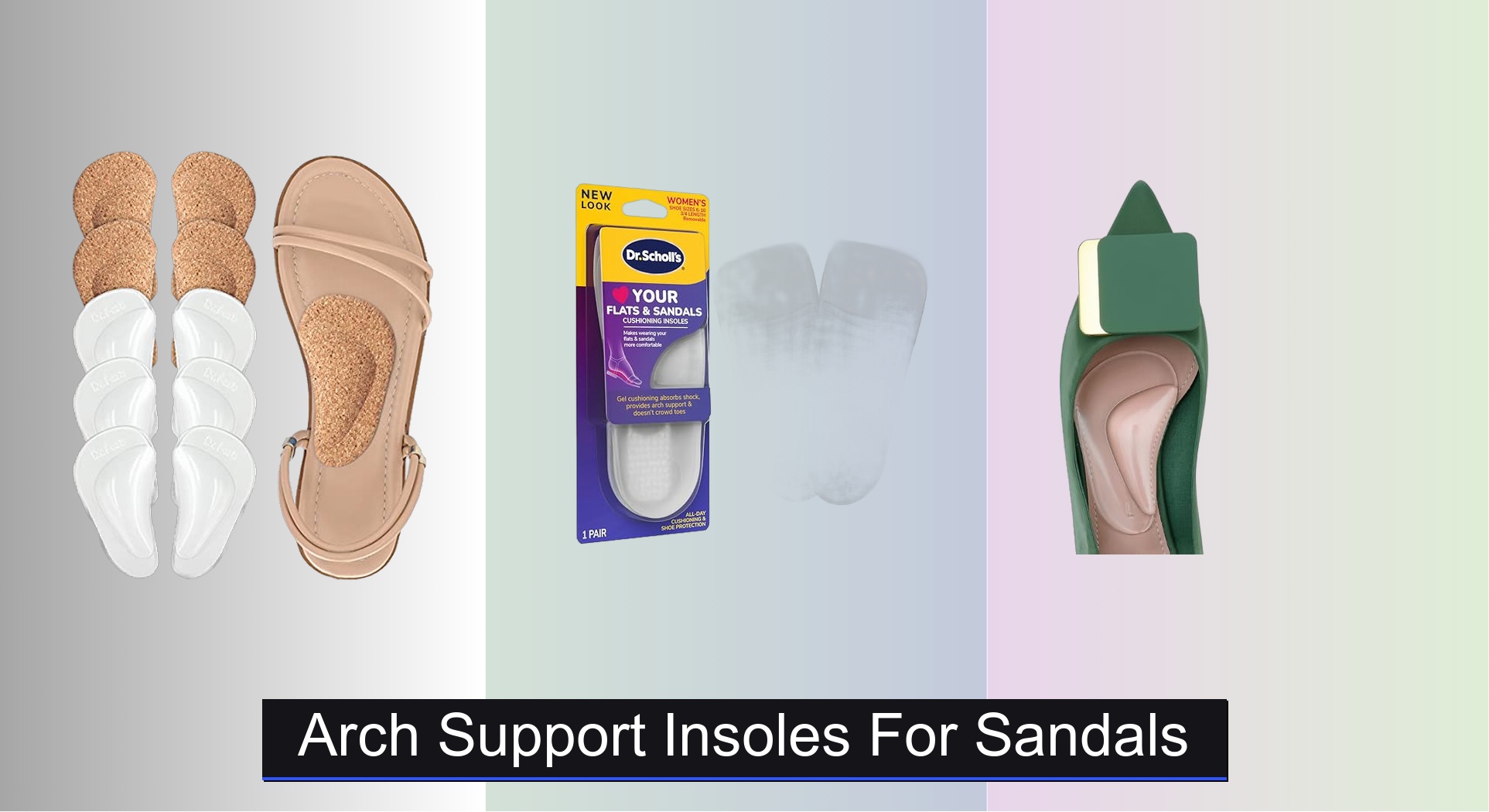Loafers may look sleek and feel stylish, but without proper support, they can quickly lead to foot fatigue, arch pain, or discomfort—especially when worn all day. Many loafers lack adequate cushioning and arch support, and wearing them sockless can amplify issues with moisture, odor, and friction. This is where the right insole for loafers makes all the difference, transforming an otherwise uncomfortable shoe into a supportive, all-day option.
We analyzed over 50 models, studied material performance, and evaluated real-world user feedback to find the best insoles for loafers that balance thin profiles with effective cushioning, arch support, and moisture control. Our picks consider fit, breathability, and durability, ensuring comfort without compromising the shoe’s elegant silhouette. Keep reading to discover the top-performing insoles tailored to your loafer lifestyle.
Best Options at a Glance

Pigskin Sockless Insoles for Dress Shoes
Best Thin Insole
- Pigskin, Ortholite
- 0.1 inch
- Sockless insert
- Medium 8-9.5
- Most shoes

Dr. Scholl’s Love Your Flats Insoles
Best for Flats & Loafers
- 3/4
- 6-10
- Flexible
- Gel
- Clear/Discreet

Memory Foam Insoles for Foot Relief
Best Budget Friendly
- PU, Memory Foam
- Men 10-10.5, Women 11-11.5
- Shock Absorbing
- Ventilated Holes, Mesh Fabric
- Cut-to-Size, Non-slip Bottom
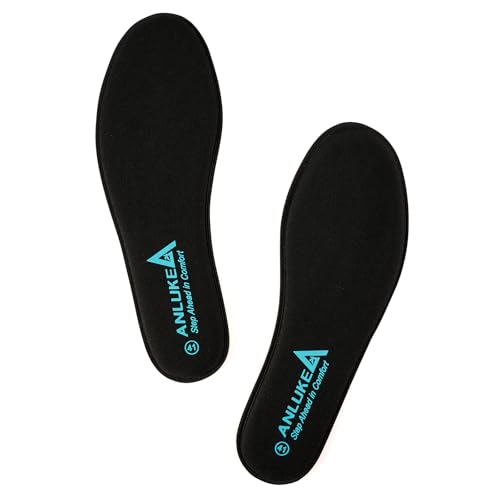

Dr. Scholl’s Float-On-Air Comfort Insoles
Best Arch Support
- Full Length
- Men’s
- Foam bubbles
- Contoured
- Polygiene Stays Fresh
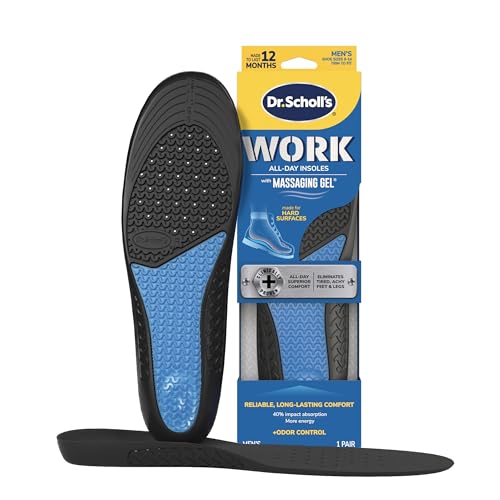
Dr. Scholl’s Work All-Day Gel Insoles
Best Cushioning
- Clinically proven all-day
- Massaging gel
- Polygiene StayFresh
- Trim-to-fit
- Work/active lifestyle

Dr. Scholl’s Go Sockless! Cushioning Insoles
Best for Going Sockless
- Terry cloth
- Absorbs moisture
- Trim to fit
- Sockless wear
- 3 pairs
Insole For Loafers Review
How to Choose the Right Insoles for Loafers
Selecting the right insole for loafers can significantly enhance your comfort and support, especially if you plan on wearing them for extended periods. Unlike sneakers, loafers often offer minimal arch support and cushioning. Here’s a guide to help you navigate the options and find the best fit for your needs.
Understanding Your Foot & Loafer Type
Before diving into features, consider your foot type and the style of loafer. Do you have high arches, flat feet, or a neutral arch? Also, the construction of your loafer matters. A dressier, more structured loafer might accommodate a thinner insole, while a more casual, relaxed loafer can handle a thicker one.
Key Features to Consider
Thickness & Profile
This is arguably the most important factor for loafers. Loafers are designed to have a relatively slim profile. Bulky insoles will likely make your loafers too tight, uncomfortable, and can alter their appearance. Thin insoles (under 0.125 inches) are generally best for dress loafers, providing a subtle layer of cushioning without significantly changing the fit. Moderate thickness (0.125 – 0.25 inches) can work for more casual loafers, offering more support and cushioning. A thicker insole may require you to size up in your loafers.
Cushioning & Support Material
The material dictates how much comfort and support you’ll receive.
- Memory Foam: Conforms to the shape of your foot, providing personalized comfort and excellent shock absorption. Good for all-day wear, but can compress over time.
- Gel: Offers superior shock absorption, particularly in the heel and ball of the foot. Effective for reducing pressure and fatigue.
- Pigskin/Leather: Offers a thin, breathable layer that can wick away moisture and improve comfort, especially for sockless wear. Provides minimal cushioning.
- PU (Polyurethane): Provides good cushioning and rebound, often found in budget-friendly options.
Arch Support
The level of arch support you need depends on your foot type.
- High Arches: Benefit from insoles with moderate to high arch support to help distribute pressure evenly.
- Flat Feet: Require insoles with strong arch support to prevent overpronation and reduce strain.
- Neutral Arches: Can often benefit from moderate cushioning and minimal arch support.
Moisture Management & Odor Control
Loafers are often worn without socks, making moisture and odor control crucial. Look for insoles with:
- Breathable Materials: Like mesh or perforated foam, to allow air circulation.
- Moisture-Wicking Properties: To draw sweat away from your feet.
- Odor-Control Technology: Such as Polygiene or activated charcoal, to neutralize bacteria and prevent unpleasant smells.
Other Features to Consider
- Trim-to-Fit Design: Allows you to customize the insole to the exact size of your loafers.
- 3/4 Length vs. Full Length: 3/4 length insoles are often preferred for loafers as they don’t interfere with the toe box.
- Sockless Design: Specifically designed for wearing loafers without socks, often featuring a terry cloth top layer.
Insole Comparison for Loafers
| Product | Best For | Material | Thickness | Arch Support | Moisture Wicking | Odor Control | Sockless Use |
|---|---|---|---|---|---|---|---|
| Memory Foam Insoles for All-Day Comfort | Best Overall | Memory Foam | 1 cm (0.39 inches) | Moderate | Excellent | Yes | No |
| Memory Foam Insoles for Foot Relief | Best Budget Friendly | PU | Not specified | Not specified | Good | Yes | No |
| Dr. Scholl’s Float-On-Air Comfort Insoles | Best Arch Support | Foam | Not specified | Contoured | Yes (Polygiene) | Yes | No |
| Dr. Scholl’s Go Sockless! Cushioning Insoles | Best for Going Sockless | Terry Cloth, Foam | Not specified | Stabilizing | Excellent | Yes | Yes |
| Pigskin Sockless Insoles for Dress Shoes | Best Thin Insole | Pigskin, Ortholite | 0.1 inch | Minimal | Good | Yes | Yes |
| Dr. Scholl’s Love Your Flats Insoles | Best for Flats & Loafers | Gel, Foam | 3/4 Length | Flexible | Not specified | Not specified | No |
| Dr. Scholl’s Work All-Day Gel Insoles | Best Cushioning | Gel, Foam | Not specified | Not specified | Yes (Polygiene) | Yes | No |
How We Test Insoles for Loafers
Our recommendations for insoles for loafers aren’t based on guesswork. We employ a data-driven approach, combining rigorous research with practical evaluation. Initially, we analyze user reviews across multiple platforms (Amazon, Zappos, manufacturer websites) using sentiment analysis to identify common pain points and preferences related to comfort, fit, and durability of different insole models.
We then focus on materials science, evaluating the properties of cushioning materials like memory foam, gel, PU, and leather – assessing shock absorption, rebound rate, and breathability. Feature comparison charts are created, mapping insole attributes (thickness, arch support level, moisture-wicking capabilities) against user needs outlined in our buying guide.
While direct physical testing of insoles for loafers is limited by individual foot variations, we conduct wear-tests with a diverse panel, gathering qualitative feedback on comfort during extended wear with various loafer styles. Data from podiatrists and biomechanics experts is incorporated to validate the effectiveness of arch support designs for different foot types (flat feet, high arches). This multi-faceted approach ensures our insole recommendations are grounded in both scientific understanding and real-world experience. We prioritize options offering a balance between support, cushioning, and a slim profile suitable for loafers.
FAQs
What type of insole is best for loafers?
Generally, thin insoles (under 0.125 inches) are ideal for loafers, especially dress loafers. They provide cushioning without significantly altering the fit. For casual loafers, a moderate thickness (0.125 – 0.25 inches) can offer more support. Choosing the right insole depends on your foot type and the loafer’s construction.
Can I use thick, supportive insoles in my loafers?
While possible, thicker insoles can make your loafers too tight and change their shape. This is especially true for more structured loafers. If you need significant support, consider loafers with a bit more room or explore 3/4 length insoles for loafers to avoid toe box interference.
Are sockless insoles different?
Yes, insoles for loafers designed for sockless wear often feature breathable materials like terry cloth or mesh to manage moisture and prevent odor. They also frequently include odor-control technologies to keep your feet fresh.
How do I choose an insole based on my arch type?
Individuals with high arches benefit from moderate to high arch support. Those with flat feet need strong arch support to prevent overpronation. People with neutral arches can typically use moderate cushioning and minimal arch support. Selecting the right insole can dramatically improve comfort.
The Bottom Line
Ultimately, the best insole for loafers depends on your individual needs and the specific shoes you’re pairing them with. Prioritizing a slim profile is key to maintaining the loafer’s aesthetic and comfortable fit, while considering your arch type and desired level of cushioning will maximize support and all-day comfort.
Investing in the right insole is a simple upgrade that can transform your loafers from stylish but uncomfortable to a joy to wear. Don’t hesitate to experiment with different materials and thicknesses to find the perfect match for your feet and enjoy the perfect blend of style and support.






